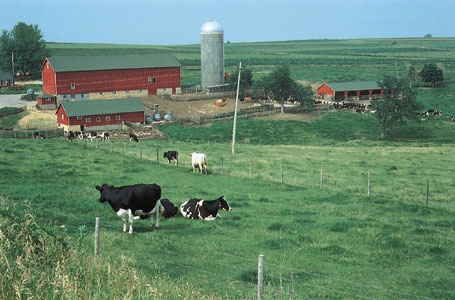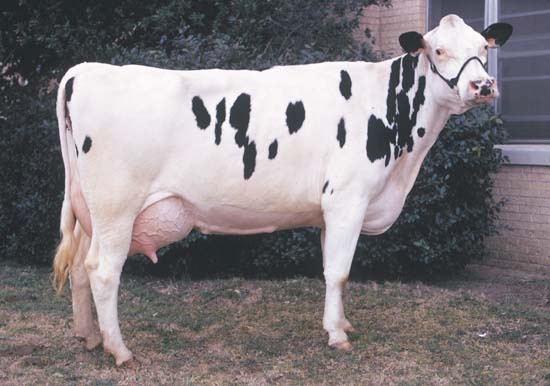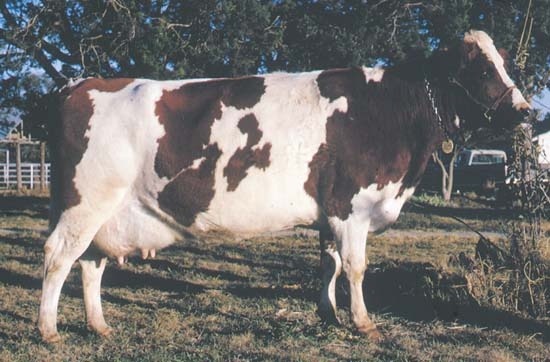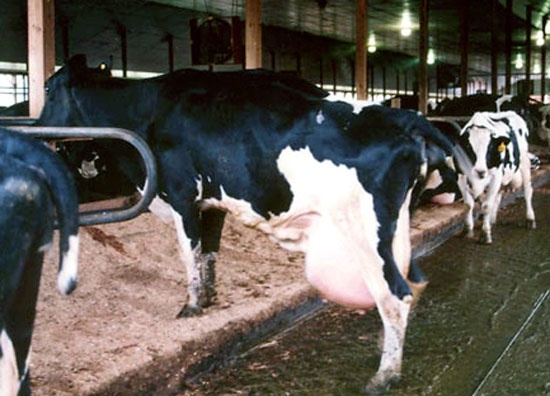dairying
Introduction
 branch of agriculture that encompasses the breeding, raising, and utilization of dairy animals (livestock), primarily cows (cow), for the production of milk and the various dairy products processed from it.
branch of agriculture that encompasses the breeding, raising, and utilization of dairy animals (livestock), primarily cows (cow), for the production of milk and the various dairy products processed from it.Milk for human consumption is produced primarily by the cow and the water buffalo. The goat also is an important milk producer in China, India, and other Asian countries and in Egypt. Goat's milk is also produced in Europe and North America but, compared to cow (cattle)'s milk, goat's milk is relatively unimportant. Buffalo's milk is produced in commercial quantities in some countries, particularly India. Where it is produced, buffalo's milk is used in the same way as is cow's milk, and in some areas the community milk supply consists of a mixture of both. This article treats the principles and practices of dairy farming. For a discussion of dairy products, see the article dairy product.
Dairy herds
 Dairy cows are divided into five major breeds: Ayrshire, Brown Swiss, Guernsey, Holstein–Friesian, and Jersey. There are many minor breeds, among them the Red Dane, the Dutch Belted, and the Devon. There are also dual-purpose breeds used to produce milk and meat, notably the Milking Shorthorn and the Red Polled.
Dairy cows are divided into five major breeds: Ayrshire, Brown Swiss, Guernsey, Holstein–Friesian, and Jersey. There are many minor breeds, among them the Red Dane, the Dutch Belted, and the Devon. There are also dual-purpose breeds used to produce milk and meat, notably the Milking Shorthorn and the Red Polled. The Ayrshire breed originated in Scotland. Animals of this breed are red and white or brown and white in colour, and they are strong, vigorous, and good foragers. Ayrshire milk contains about 4.1 percent butterfat. Switzerland is the native home of the Brown Swiss. These cows are silver to dark brown in colour, with a black nose and tongue. Brown Swiss are strong and vigorous. The average fat test of the milk is 4.1 percent. The Guernsey breed originated on Guernsey Island off the coast of France. The Guernsey is fawn-coloured with clear white markings. The milk averages about 4.8 percent fat and has a deep yellow colour. The Holstein–Friesian (Holstein-Friesian) breed originated in The Netherlands. It is black and white in colour and large in size. Holsteins give more milk than any other breed; the average butterfat content is 3.7 percent. The Jersey breed originated on the isle of Jersey, in Great Britain. Jersey cows are fawn in colour, with or without white markings. They are the smallest of the major dairy breeds, but their milk is the richest, containing on the average 5.2 percent butterfat. The protein content of milk is highest for Guernsey (3.91 percent) and Jersey (3.92 percent) and lowest for Holstein (3.23 percent).
The Ayrshire breed originated in Scotland. Animals of this breed are red and white or brown and white in colour, and they are strong, vigorous, and good foragers. Ayrshire milk contains about 4.1 percent butterfat. Switzerland is the native home of the Brown Swiss. These cows are silver to dark brown in colour, with a black nose and tongue. Brown Swiss are strong and vigorous. The average fat test of the milk is 4.1 percent. The Guernsey breed originated on Guernsey Island off the coast of France. The Guernsey is fawn-coloured with clear white markings. The milk averages about 4.8 percent fat and has a deep yellow colour. The Holstein–Friesian (Holstein-Friesian) breed originated in The Netherlands. It is black and white in colour and large in size. Holsteins give more milk than any other breed; the average butterfat content is 3.7 percent. The Jersey breed originated on the isle of Jersey, in Great Britain. Jersey cows are fawn in colour, with or without white markings. They are the smallest of the major dairy breeds, but their milk is the richest, containing on the average 5.2 percent butterfat. The protein content of milk is highest for Guernsey (3.91 percent) and Jersey (3.92 percent) and lowest for Holstein (3.23 percent).Breeding (animal breeding) and herd improvement
The breeds of dairy cattle have been established by years of careful selection and mating of animals to attain desired types. Increased milk and butterfat production has been the chief objective, although the objective often has shifted to increased milk and protein production. Production per cow varies with many environmental factors, but the genetic background of the cow is extremely important.
The principles of breeding to improve production have been helpful in increasing milk production in lesser developed countries. Progress has also been made in India with cows and water buffalo.
Artificial (artificial insemination) breeding has developed into a worldwide practice. Bulls with the genetic capacity to transmit high milk-producing ability to their female offspring are kept in studs. Dairy-farmer cooperatives usually operate the studs, with artificial insemination generally used. Semen for artificial insemination may be frozen for shipment to any part of the world.
Feeding dairy cattle
The dairy cow is an efficient producer of human food from roughage. This ability is attributable to a unique digestive system that consists of a four-compartment stomach capable of handling roughages not digested by human beings and other monogastric (one-stomached) animals.
Pasture is the natural feed for dairy cattle, and an abundance of good pasture provides most of the requirements of a good dairy ration. An outstanding example of grassland dairying is found in New Zealand, where cows are on pasture all year and milk production costs are at a minimum. The farmer does not need to prepare and store feed for a long winter period. Feeding a balanced ration, however, rather than grass alone, increases milk production. By 2000 the average annual production per cow in New Zealand was 8,655 pounds (3,926 kilograms) of milk, while in the U.S (United States)., where supplemental feeding is common, it was 18,204 pounds, or 8,257 kilograms. Pastures of poor quality must be supplemented with other feed, such as green crops, summer silage, or hay.
During seasons when pastures are inadequate, cows need hay, silage, and grain in sufficient amounts and balance to supply nutrient needs, and to guarantee a nutritional reserve to keep milk volume and composition from declining.
Disease (animal disease) prevention
Disease is one of the greatest problems of the dairy farm. It is a constant threat and may make removal of valuable animals from the herd necessary when they show even a possibility of disease. One study of removal of cows from a typical dairy herd showed that slightly more than one in five were removed yearly and about a third of these were lost.
 Good herd management includes cleanliness, isolation of sick or injured animals, keeping premises free of hazards that might cause injury, and continuous protection against poisonous plants and other material. Certain diseases, such as tuberculosis, require injections. Others, such as mastitis, require constant treatment. For some diseases there is no known cure; slaughter of the animal is the only way to stop spread of the infection. Foot and mouth disease is the most notorious of these; severe measures have been employed by most governments in order to exclude or control this disease.
Good herd management includes cleanliness, isolation of sick or injured animals, keeping premises free of hazards that might cause injury, and continuous protection against poisonous plants and other material. Certain diseases, such as tuberculosis, require injections. Others, such as mastitis, require constant treatment. For some diseases there is no known cure; slaughter of the animal is the only way to stop spread of the infection. Foot and mouth disease is the most notorious of these; severe measures have been employed by most governments in order to exclude or control this disease.Milking and bulk handling on the farm
The development of milk-producing tissue in the mammae is triggered by conception; minimal production begins in the seventh or eighth week, but secretion is inhibited until after calving. The stimulus of calving increases lactation for several weeks, until another conception prompts a gradual decline. In response to pregnancy hormones and the needs of the fetus, the animal is usually dry for the month or two preceding calving.
Milk is produced by the cow from her blood, and a large amount of food is necessary for maintenance of a high producing cow. The products of digestion and absorption enter the blood and are carried to the udder. There the raw materials are collected and changed into milk components. Each time the blood passes through the udder a small fraction of the components is removed to make the milk. Some 400 pounds (50 gallons, or about 200 litres) of blood must pass through the udder to make one pound (about 0.45 kilograms) of milk. A daily flow through the udder of 10 tons (20,000 pounds, or about 9,000 kilograms) of blood is required for a cow producing 50 pounds (22.5 kilograms) of milk per day. The energy required to produce milk components and to circulate the blood indicates the great importance of proper and abundant feed.
Today, most milking is done with machines by a carefully trained operator, usually twice a day, in stanchion barns or milking parlours. An experienced milker handles one to three machine units. The cows are first cleaned, and the teat cups put on. A pulsating vacuum draws the milk into a receiver or through piping into the farm milk tank.
Milk is an extremely perishable commodity that must be cooled to 50° F (10° C) or less within two hours. It then must be maintained at that temperature until it is delivered to the consumer.
Milk is transported from farm to plant in a variety of ways, depending on the part of the world. In the Gujarat (Gujarāt) region of India, the milk is carried to a receiving station in jars on the heads of women who do the milking. The receiving station transports the milk in large cans to the plant by truck.
In the major milk-producing countries of the world the milk is held cold in the farm tank or in cans until it is picked up, usually once or twice daily, by tanker or truck. Tankers pump the milk in at the farm and out into plant tanks on delivery. The tanker driver measures and samples each farmer's milk; fat and bacteria tests are run at the plant. The use of pipelines (pipeline) has been introduced on a small scale in some European countries for delivery of milk from farm to factory.
Additional Reading
Dairy production and marketing are treated in William M. Etgen, Robert E. James, and Paul M. Reaves, Dairy Cattle Feeding and Management, 7th ed. (1987); G.H. Schmidt, L.D. Van Vleck, and M.F. Hutjens, Principles of Dairy Science, 2nd ed. (1988); and Donald L. Bath et al., Dairy Cattle: Principles, Practices, Problems, Profits, 3rd ed. (1985). Ed.
- Nikola Pašić
- Nikola Tesla
- Nikolaus August Otto
- Nikolaus Gerhaert von Leyden
- Nikolaus Lenau
- Nikolaus Ludwig, Graf (Count) von Zinzendorf
- Nikolaus Ludwig Zinzendorf, Graf (Count) von
- Nikolaus von Amsdorf
- Nikolaus von Dreyse
- Nikolay Aleksandrovich Berdyayev
- Nikolay Aleksandrovich Bulganin
- Nikolay Aleksandrovich Dobrolyubov
- Nikolay Aleksandrovich Kozyrev
- Nikolay Aleksandrovich Tikhonov
- Nikolay Alekseyevich, Knyaz Orlov
- Nikolay Alekseyevich Milyutin
- Nikolay Alekseyevich Nekrasov
- Nikolay Alekseyevich Orlov, Knyaz
- Nikolay Andrianov
- Nikolay Bobrikov
- Nikolay D. Kondratyev
- Nikolayev, Andriyan Grigoryevich
- Nikolayevsk-na-Amure
- Nikolay Gennadiyevich Basov
- Nikolay Gogol